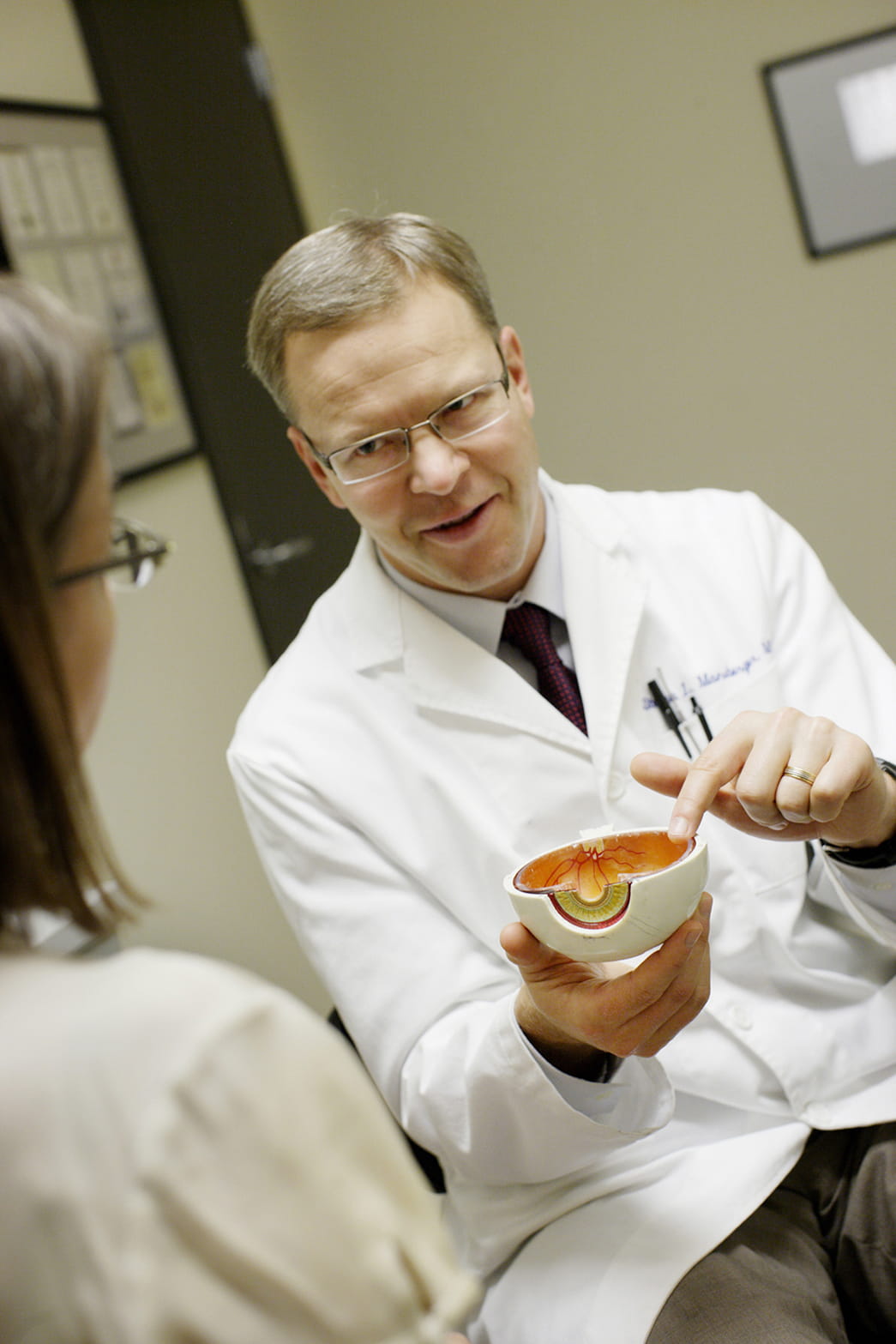Prevent glaucoma: Get an eye exam
January 16, 2020
Home > About > News & Media > Story Center
Glaucoma is the second leading cause of blindness in the United States. The disease is a progressive degeneration of the optic nerve, which connects the eye and the brain.
Damage to the optic nerve results in blind spots, which can develop into loss of vision. Unfortunately, much of the vision loss goes undetected. Of the more than 2.25 million people in the U.S. over the age of 45 with glaucoma, half are undiagnosed.
“Although there is no cure for glaucoma, early detection leads to earlier treatment, which can significantly delay or stop further visual loss,” says Steve Mansberger, M.D., Legacy Devers Eye Institute. “While anyone has a 2.3% lifetime risk of glaucoma, those with a first-degree relative with glaucoma are 10 times more likely to also get the disease.”
The best method for early detection? Get an eye exam.
Risk factors and when to get your eyes examined
People at risk for glaucoma also include those older than 40 years of age, those of African-American descent and anyone who has had a previous eye injury. Regular exams are recommended every one to years for people over the age of 65 and every two to four years for ages 40–64.
People with risk factors for the disease who are between the ages of 20 and 39 should be screened every three to five years. An exam should include glaucoma optic nerve testing, intraocular pressure and checking for angle closure with gonioscopy.
Learn more from Legacy Devers Eye Institute.
For media inquires, contact Vicki Guinn, Legacy Health Public Relations, vguinn@lhs.org, 503-515-5143.


